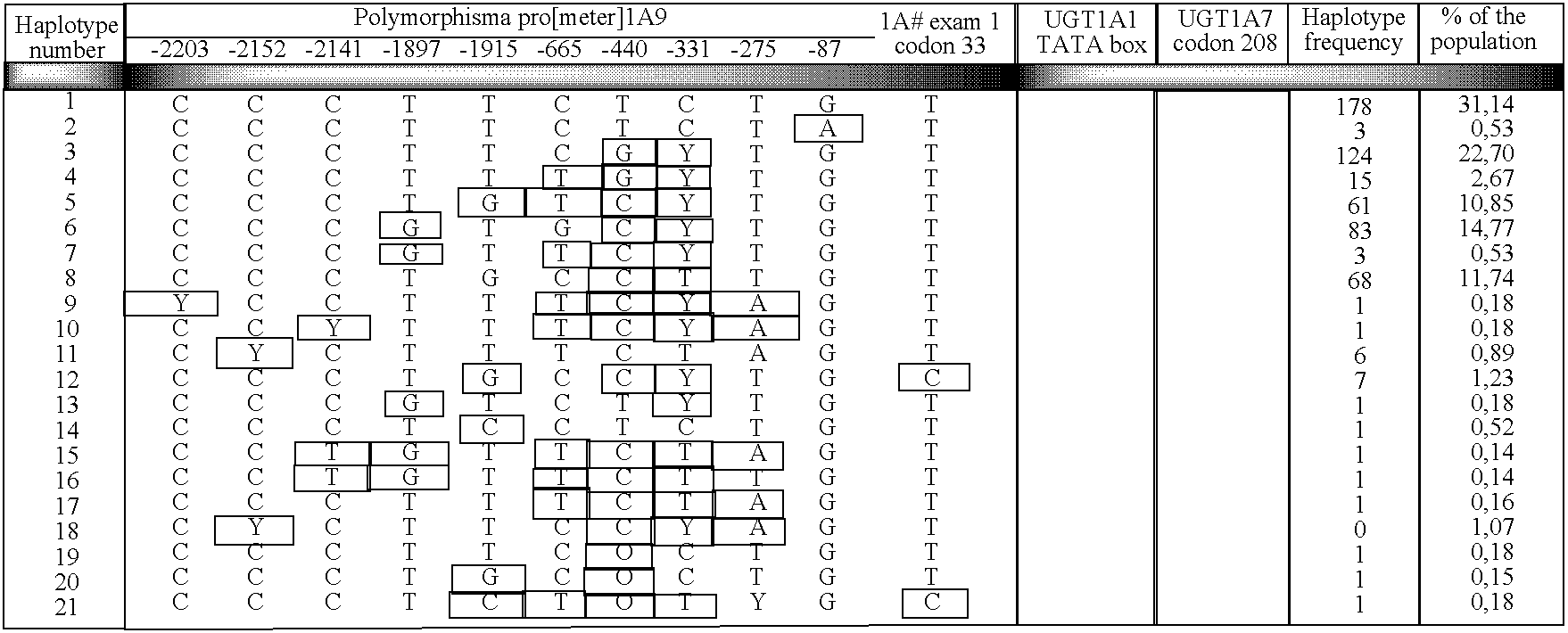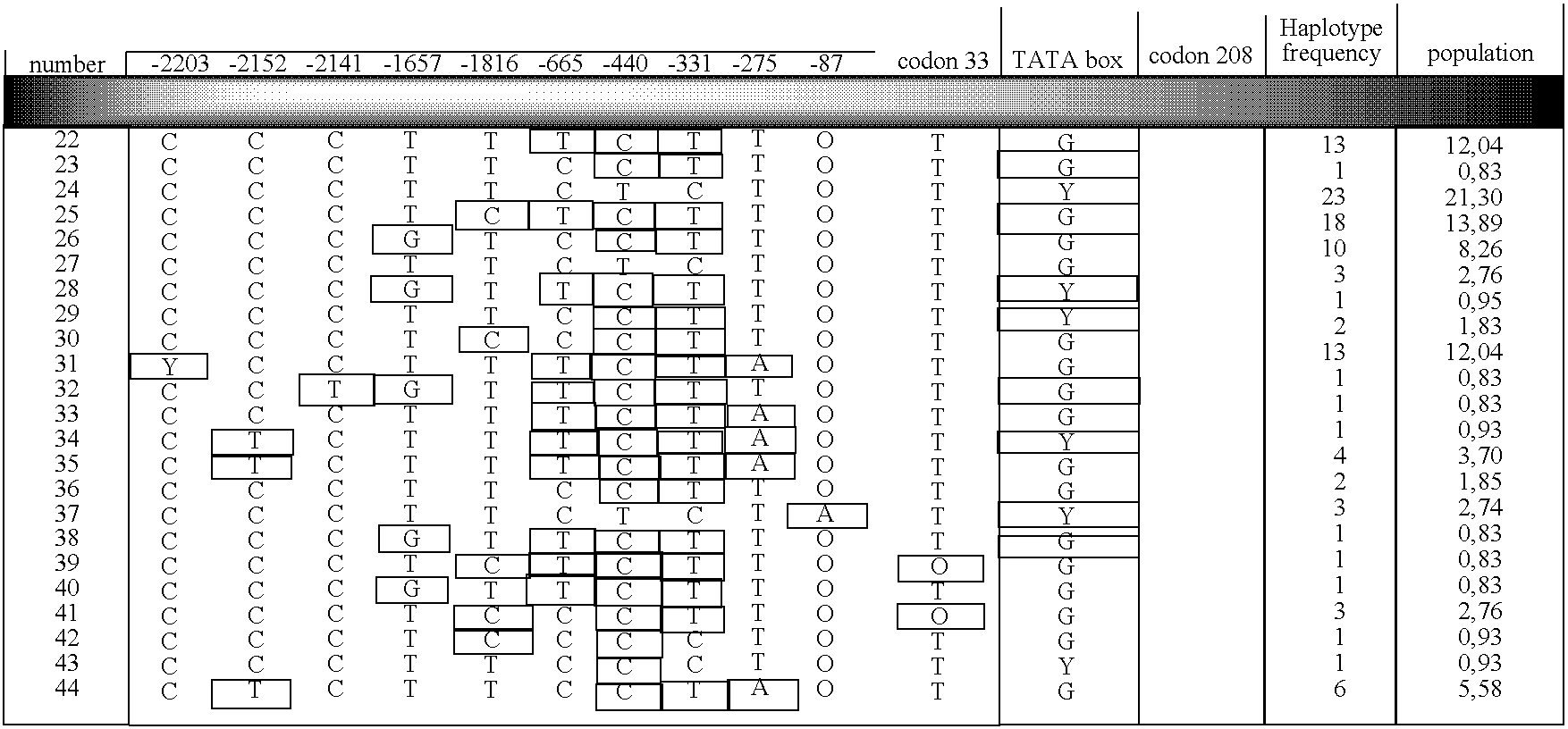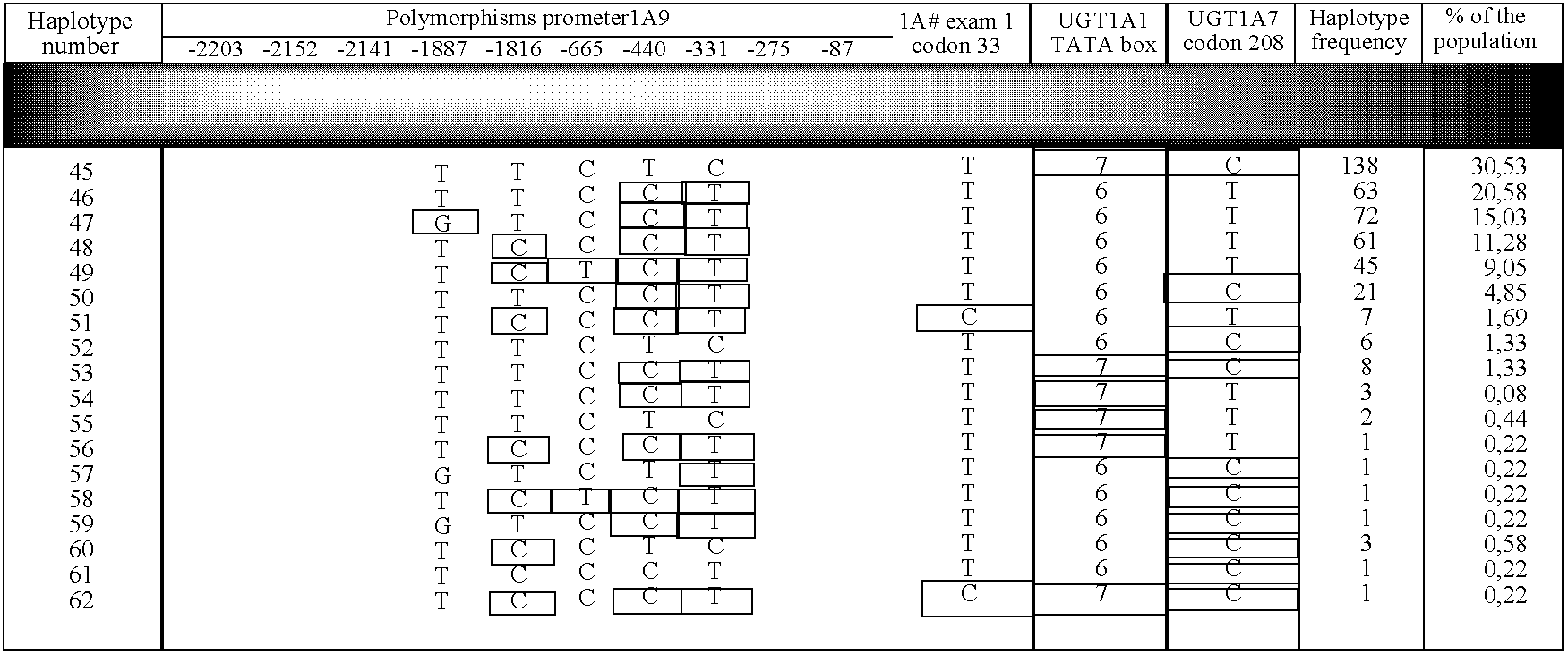Method for determining predisposition to a physiological reaction in a patient
a physiological reaction and patient technology, applied in the field of determining the predisposition to a physiological reaction in a patient, can solve the problems of high plasma level, high incidence of severe hematological and gastrointestinal toxicities, clinical and economic complications,
- Summary
- Abstract
- Description
- Claims
- Application Information
AI Technical Summary
Benefits of technology
Problems solved by technology
Method used
Image
Examples
example i
Distribution of SN-38-Glucuronide Formation In Human Liver Microsome Samples
[0075] To obtain statistical data on interindividual variation of SN-38 glucuronidation, we measured the SN-38-G formation, as currently known in the background art, with microsomes preparations from each patient liver sample. The glucuronide formation rates were regrouped into ranges and every sample was categorized within these ranges.
[0076] The following results show a mean for glucuronidation rate of 0.61 pmol / mg of protein / minute (Table 1). Data also indicate a substantive distribution of the glucuronidation rates. FIG. 4 illustrates the distribution of the glucuronidation rates obtained with liver samples.
TABLE 1Statistical data of SN-38 glucuronide formation by human liver samplesQuantilesMomentsMean0.6117859100.0%maximum1.9735Std Dev0.501461299.5%1.9735Std Err Mean0.072379797.5%1.9309upper 95% Mean0.757394790.0%1.5699lower 95% Mean0.466177275.0%quartile0.9279N4850.0%median0.4204Sum Wgts4825.0%qua...
example ii
Identification of UGT1A9 Variants
[0077] Material and Methods
[0078] DNA samples
[0079] DNA samples of 201 Caucasian subjects were obtained from the Quebec Family Study (QFS) (Simonen et al., 2002, Med. Sci. Sports Exerc. 34: 1137-1142). Unrelated Caucasian subjects were recruited at the Massachusetts General Hospital (n=100) and genomic DNA from African-American subjects were kindly provided by Robert Millikan (Lineberger Comprehensive Cancer Center, School of Medicine, University of North Carolina, Chapel Hill, N.C. 27599-7435, USA) (n=20). These samples had been anonymized prior to their reception in our laboratory. All subjects have provided written consent for the use of their DNA for experimental purposes, and the present study was reviewed and approved by Institutional Review Boards (CHUL Research Center is and Laval University).
[0080] Resequencing of the UGT1A9 Gene and Genotyping
[0081] Polymerase chain reaction (PCR) was used to amplify the first exon of the UGT1A9 gene. ...
example iii
Identification of Novel UGT1A9 Promoter Variants
[0100] The primary objective of this study was to examine the genomic sequences of the UGT1A9 gene promoter sequence to Identify novel expression polymorphisms and to determine whether or not these polymorphic variations would affect the expression of the UGT1A9 protein. To determine the effect of the polymorphic variations on the UGT1A9 protein expression, semi-quantitative immunoblot analyses were- performed on liver microsomes from patients and correlated with their genotypes. Identification of novel polymorphisms has been performed by direct sequencing of a pool of DNA samples from patients. Determination of genotypes of each patient monitored was also performed by direct sequencing.
[0101] Liver microsomes from patients were prepared by differential centrifugation. The crude cell extracts were centrifuged at 12000×g at 4+ C. for 22 min to remove nuclei and other cellular debris. Supernatants were centrifuged at 105000×g for 60 mi...
PUM
| Property | Measurement | Unit |
|---|---|---|
| volume | aaaaa | aaaaa |
| resistance | aaaaa | aaaaa |
| polymorphic | aaaaa | aaaaa |
Abstract
Description
Claims
Application Information
 Login to View More
Login to View More - R&D
- Intellectual Property
- Life Sciences
- Materials
- Tech Scout
- Unparalleled Data Quality
- Higher Quality Content
- 60% Fewer Hallucinations
Browse by: Latest US Patents, China's latest patents, Technical Efficacy Thesaurus, Application Domain, Technology Topic, Popular Technical Reports.
© 2025 PatSnap. All rights reserved.Legal|Privacy policy|Modern Slavery Act Transparency Statement|Sitemap|About US| Contact US: help@patsnap.com



